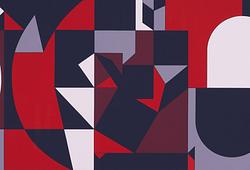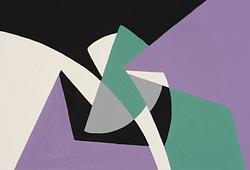Isaac Grünewald
"Cirkus"
Executed in 1918. Canvas 170.5 x 131 cm
Alkuperä - Provenienssi
Artist's private Collection.
Nordén Auctions, Stockholm, 20 November 1997, cat. no. 88.
Private Collection, Sweden.
Näyttelyt
Liljevalchs konsthall, Stockholm, "Expressionistutställning - Grünewald - Hjertén - Engström", 1918, cat. no. 69 (then titled "Strålkastare (Spotlight), circus").
Galerie La Licorne, Solo Exhibition, Paris, 1921, cat. no. 22.
Liljevalchs konsthall, Stockholm, "Isaac Grünewald - Paintings 1904-1944", 7 - 29 October 1944, cat. no. 130.
Liljevalchs konsthall, Stockholm, "Retrospective*, Stockholm, 1945, cat. no. 130.
Liljevalchs konsthall, Stockholm, "Jubilee Exhibition 1909's Men", March-April 1959, cat. no. 56.
Liljevalchs konsthall, Stockholm, "Det sjungande trädet (The Singing Tree)", 1989, cat. no. 78.
Borås konstmusem, "Det sjungande trädet (The Singing Tree)", 1990, cat. no. 78.
Norrköpings konstmuseum, "Det sjungande trädet (The Singing Tree)", 1990, cat. no. 78.
Kalmar konstmuseum, "Grünewald", 16 March - 20 May 1991, cat. no. 26.
Liljevalchs konsthall, Stockholm, "Liljevalchs 100 Years", 2021, cat. no. 10.
Kirjallisuus
Sixten Strömbom, "Isaac Grünewald", Stockholm 1934, mentioned p. 29.
Exhibition catalogue, "Det sjunande trädet/The Singing Tree", 1989/1990, Liljevalchs, Stockholm, Norrköpings konstmuseum, Borås konstmuseum, ill. full page in colour p. 47.
Bernhard Grünewald, "Orientalen - bilden av Isaac Grünewald i svensk press 1909-1946 (The Oriental - the image of Isaac Grünewald in the Swedish press 1909-1946)", Stockholm, 2011, ill. p. 103.
Per Gedin, "Isaac Grünewald – modernist och människa (Isaac Grünewald – modernist and human)", Stockholm 2015, mentioned p. 189.
Muut tiedot
The story of the young, bold, and talented boy who went to Paris (1908–1911) to apprentice under the bon vivant Henri Matisse is one of the 20th century’s favorite Swedish art tales. Isaac described his first encounter with Matisse’s painting as an explosion of color: “Suddenly, I stood before a wall that sang—no, roared—with color and radiant light. Here I faced something entirely new and relentless in its uninhibited freedom.” This freedom appealed to Grünewald, and he quickly enrolled in Matisse’s prestigious painting school, whose radical approach attracted many of the era’s leading artists.
Under Matisse’s guidance, Grünewald and the other Swedish students abandoned the Nordic color palette and restrained brushwork, transitioning to an expressive color scheme and dramatic forms. Isaac Grünewald and Sigrid Hjertén, his future wife, became leading figures of the groundbreaking Expressionism that fundamentally changed Swedish art history.
This new, pioneering art movement, which completely broke with earlier traditions, was initially met with resistance from both critics and gallery visitors. It would take nearly a decade—until the major Expressionist exhibition of 1918 at Liljevalchs—for Sweden to embrace this new way of seeing art. The Expressionist exhibition marked a milestone in Swedish art history and became the public breakthrough for the participating artists: Isaac Grünewald, Sigrid Hjertén, and Leander Engström. Isaac exhibited 220 works, Sigrid 170, while Leander Engström displayed 65. This exhibition featured some of Swedish modernism’s most significant works, including “Det sjungande trädet,” “Apachedansen,” “Tjurfäktning,” and “Cirkus.”
“Cirkus” is part of a suite of three paintings from 1917/18 that hung prominently in the dining room of the Grünewalds’ villa in Saltsjöbaden. “Apachedansen” (privately owned) and “Tjurfäktning” (held at the Norrköping Art Museum) all share motifs taken from the circus arena, where a dynamic interplay of movement, color, form, and light is central.

















































































